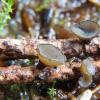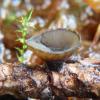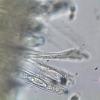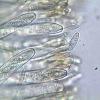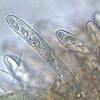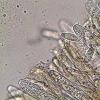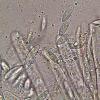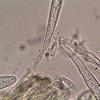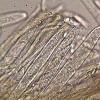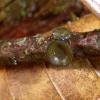
08-05-2015 16:45
 Blasco Rafael
Blasco Rafael
Hola, he encontrado estas ciborias en unas ramitas

08-05-2015 17:42
 Marcel Heyligen
Marcel Heyligen
Hi all,I am looking for this articles.Schrimpl L.

07-05-2015 15:03
Encontrada en un tocon podrido de haya en el Pirin

06-05-2015 19:22
 Bernard CLESSE
Bernard CLESSE
Pas encore fait la micro mais est-ce que cet asco

08-05-2015 17:11
 Edit Szilvásy
Edit Szilvásy
Hi Everybody!Today I found these stalked species o

08-05-2015 11:47
Salvador TelloHola.Tengo estos hongos recogidos en el mes octubr

08-05-2015 08:27
Bonjour. Je passe un pick-up d'une Gyromitra alpin

05-05-2015 23:47
 Jenny Seawright
Jenny Seawright
Hello all, I wondered if anyone might have details
Ciboria en Abies alba
Blasco Rafael,
08-05-2015 16:45
 Hola, he encontrado estas ciborias en unas ramitas de abies alba que estaban cubiertas de Pithya vulgaris,y las he visto en casa al ir a guardar las Pithyas,
Hola, he encontrado estas ciborias en unas ramitas de abies alba que estaban cubiertas de Pithya vulgaris,y las he visto en casa al ir a guardar las Pithyas,al ser en Abies pensaba que seria Ciboria rufofusca, pero no lo es la micro no coincide, y en la documentacion que tengo lo mas parecido que en cuentro es Ciboria coryli, que las medidas de esporas entrarian pero las ascas son mas largas en mi muestra, y luego esta el sustrato, ya que no se si puede salir fuiera de Corylus.
Apotecios de 1,3--2 mm diametro X 1,4--1,9 mm de altura.
Esporas biseriadas, con dos gotas lipidicas, granulos internos, 17--21 x 6--7.
Ascas J+, croziers - , 170--205 x 13--15.
Parafisis x4 apice x5, septadas, con pigmento marron anaranjado.
Alguna idea ???
Un saludo
Rfaael
Raúl Tena Lahoz,
08-05-2015 16:48

Re : Ciboria en Abies alba
Hola Rafa
Se trata de Rutstroemia elatina. ¡Muy bonita especie!
La tengo vista por Peña Oroel.
¿Tienes la Pithya fresca?
Un abrazo,
Raúl
Se trata de Rutstroemia elatina. ¡Muy bonita especie!
La tengo vista por Peña Oroel.
¿Tienes la Pithya fresca?
Un abrazo,
Raúl
Blasco Rafael,
08-05-2015 16:52

Re : Ciboria en Abies alba
Hola Raul.
Las seque, pero he visto que en la caja, quedo una sin sacar si quieres te la guardo.
Gracias no conocia esa Ciboria
Un saludo
Rfaael
Y sigo con Ciboria, esto son ls prisasya que me marcho a trabajar
Las seque, pero he visto que en la caja, quedo una sin sacar si quieres te la guardo.
Gracias no conocia esa Ciboria
Un saludo
Rfaael
Y sigo con Ciboria, esto son ls prisasya que me marcho a trabajar
Raúl Tena Lahoz,
08-05-2015 16:58

Re : Ciboria en Abies alba
Rutstroemia, no Ciboria ;-)
Sí, por favor, guárdamela y quedamos el lunes al mediodía si te viene bien.
Raúl
Sí, por favor, guárdamela y quedamos el lunes al mediodía si te viene bien.
Raúl
Lothar Krieglsteiner,
08-05-2015 16:58
Blasco Rafael,
09-05-2015 13:49

Re : Ciboria en Abies alba
Gracias Lothar.
Las ramas caidas parecian del año pasado, el color hace que pasen desapercibidas ya que estan entre ls aciculas en la base de la madera
Un saludo
Rafael
Las ramas caidas parecian del año pasado, el color hace que pasen desapercibidas ya que estan entre ls aciculas en la base de la madera
Un saludo
Rafael
